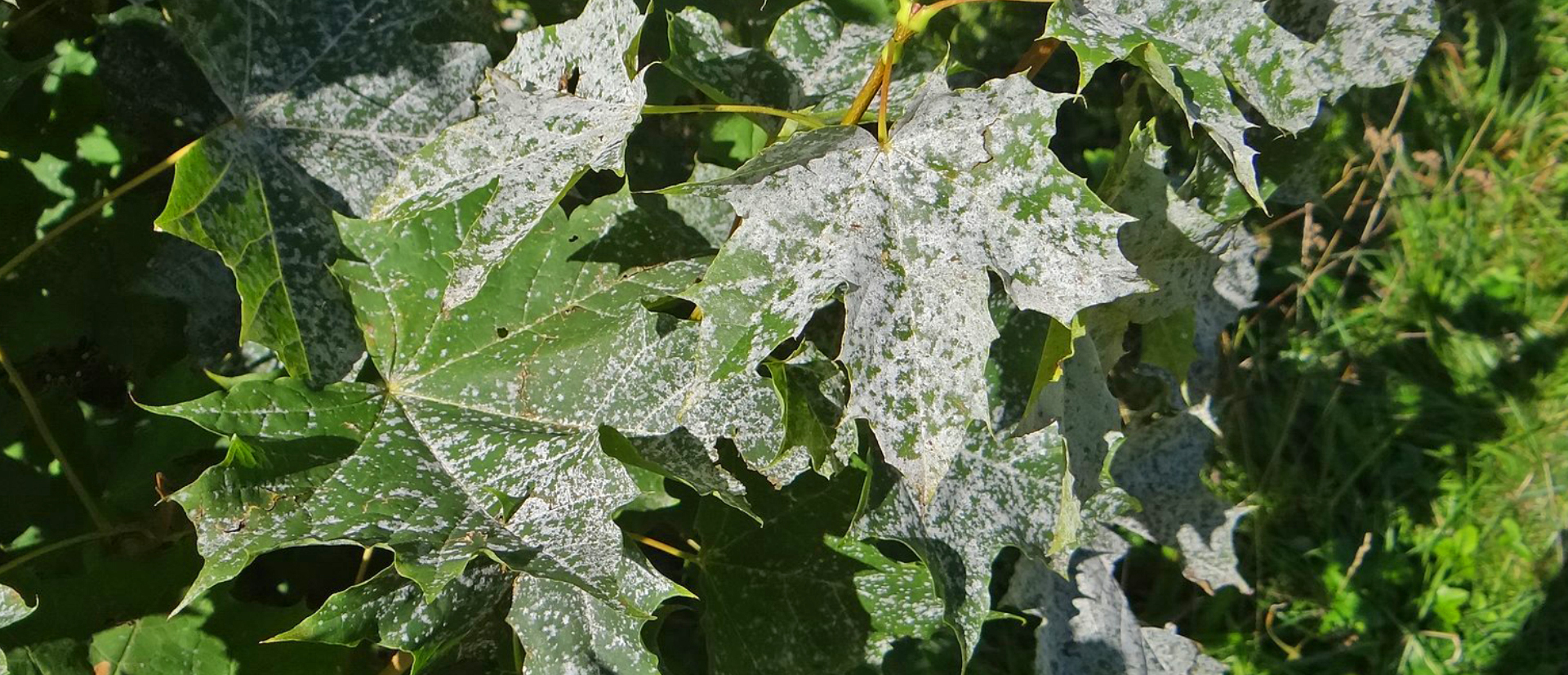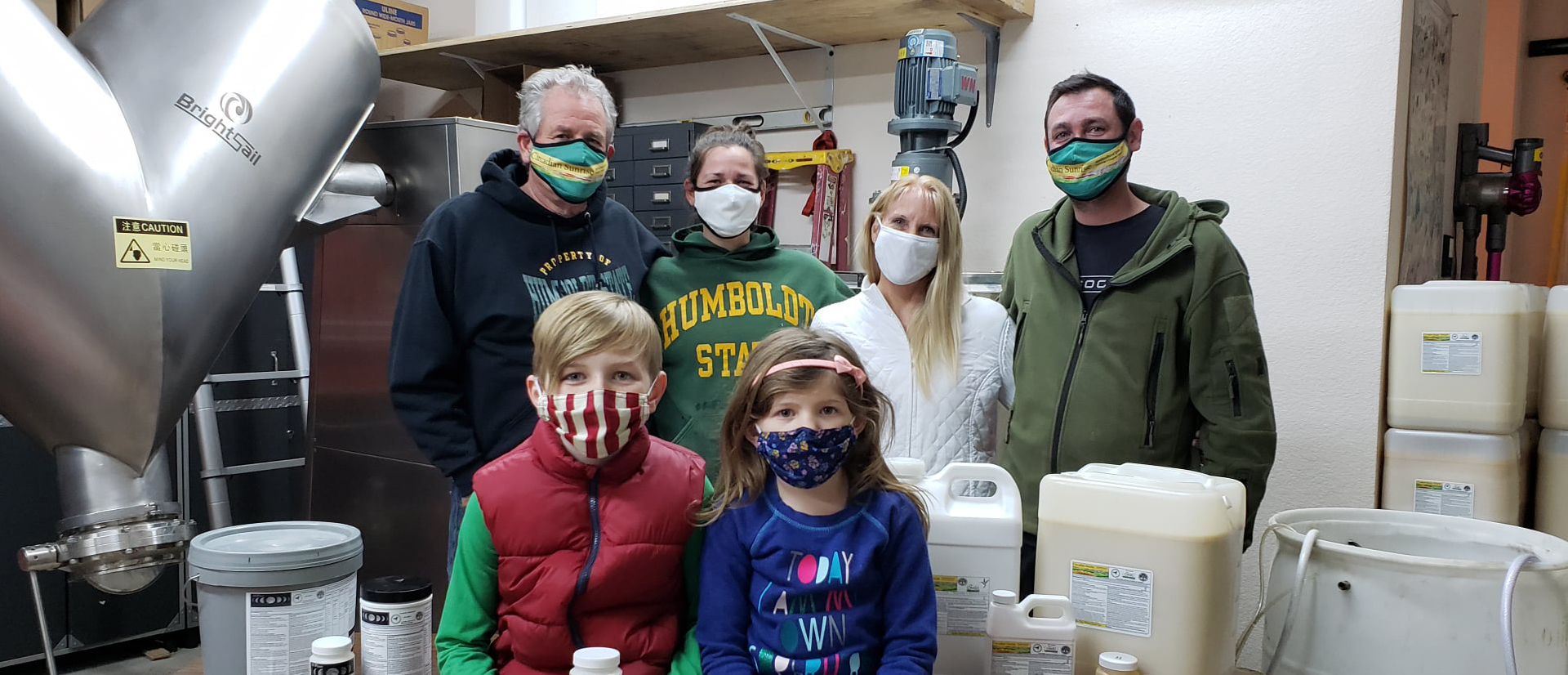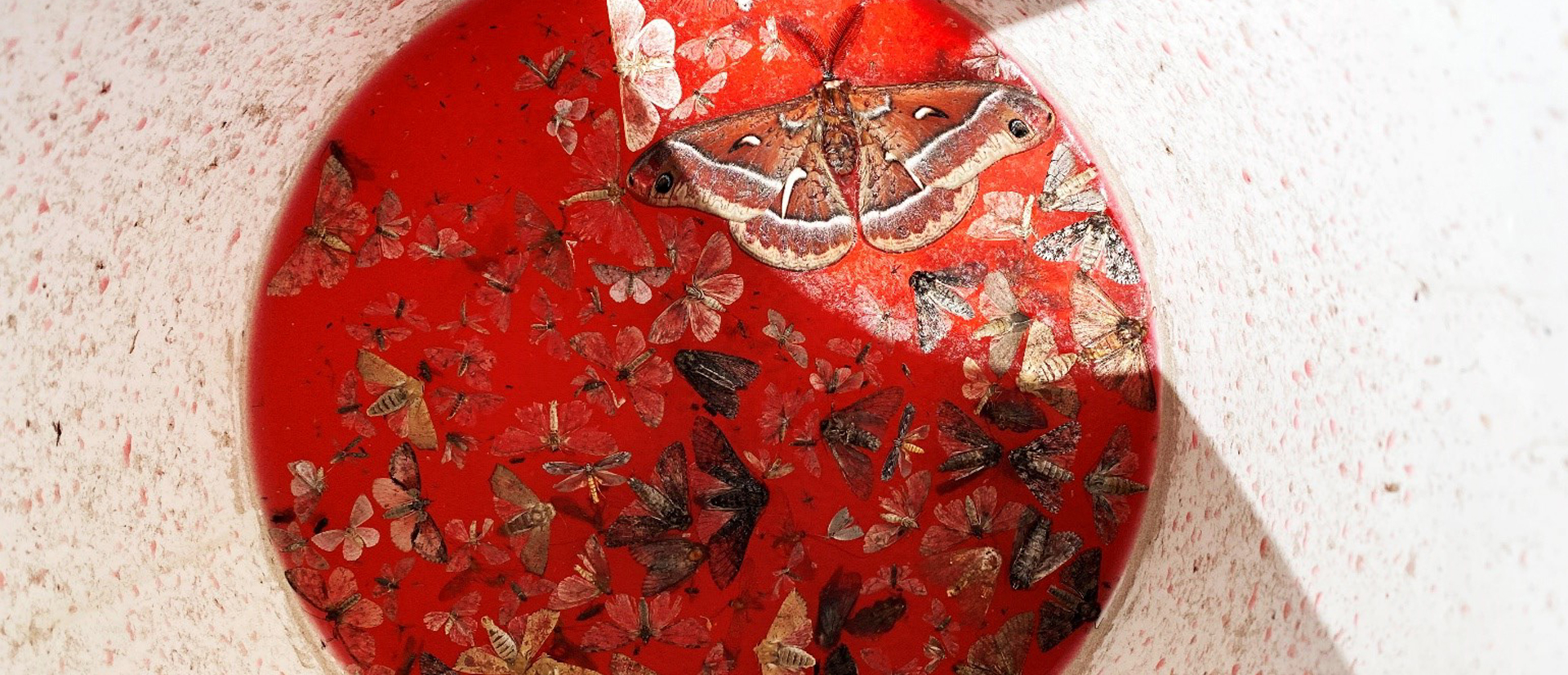Powdery mildew is a fungal disease affecting many crops, from roses and gerberas to grapes and cannabis. Its fuzzy white to gray hyphae appear on both sides of the leaves, though upper surfaces tend to be more affected with most plants. You might confuse it with downy mildews, but their hyphae (the white fuzzy stuff) are concentrated on lower leaf surfaces and are most prevalent in wet conditions. Unlike other foliar diseases, no free-standing water is required for powdery mildew spores to germinate and infect a host. This is because powdery mildew spores carry their own water. That’s great news for powdery mildew spores but bad news for your crops.
Powdery mildews are actually caused by many different fungi, all of which are rather host specific. The powdery mildew you see growing on your crape myrtles (Erysiphe lagerstroemiae) is different from the powdery mildew you see growing on your grapes (Erysiphe necator), which is different from the powdery mildew on your strawberries (Podosphaera aphanis), cannabis (Podosphaera macularis) and cucurbits (Sphaerotheca fuliginea and Erysiphe chchoracearum). The powdery mildew you see on your cucumber vines will not affect your precious strawberries, and visa versa. But spores of every kind seem to be in the air everywhere and if you’re not taking preventative measures you WILL eventually see powdery mildew on your crops.
These conditions favor powdery mildew infections:
- Moderate temperatures. With grapevines, 3 consecutive days with 6 or more continuous hours
of temperatures between 70° and 85°F as measured in the vine canopy are sufficient for
spawning an epidemic. - Shade and overcast.
- Lush vigorous growth. This is what most growers want. To have lush vigorous growth with no
powdery mildew, growers need to apply pesticides.
Universities everywhere recommend preventing powdery mildews over attempting to eradicate them. This is done by making regular applications throughout the growing season. Soaps labelled for powdery mildew control don’t work, not even as a preventative. Many products, though, are effective at preventing powdery mildews. Sulfur is cheap and effective, but farm managers have to deal with 24- hour re-entry intervals, and every year field workers end up in hospital emergency rooms with eye
irritation and skin burns and rashes attributable to sulfur. Sulfur can also impart a flavor in the final product which most would consider undesirable. Some of the conventional pesticides labelled for powdery mildew control don’t work all that well, and those that do work well today are already showing signs of losing the evolutionary battle with pathogens acquiring resistance.
Pristine (a BASF product) is one of the few pesticides that can eliminate powdery mildew, but even it is losing the battle of acquired resistance. Of the softer chemistries, most will help with preventing powdery mildews, but won’t eliminate existing infections. Bicarbonate sprays like Kaligreen only prevent powdery mildews at any
rate short of turning leaves to toast. Summer sprays oils only prevent powdery mildews. Also, most oil- based sprays are incompatible with sulfur applications (Circadian Sunrise is an exception). Serenade is somewhat effective as a preventive, but will not eliminate existing infections. Dr. Zymes Elimator is a soft chemistry that can eliminate powdery mildew, but growers can’t spray it during the day or they will burn leaves, and it is expensive ($138 to $276 to treat one acre). Circadian Sunrise is an engineered horticultural oil derived from natural and renewable ingredients. Regular applications of Circadian Sunrise at its lower labeled rates prevent powdery mildews from taking hold, and at the higher labelled rates will eliminate existing powdery mildew infections. It has the added benefit of killing spider mites and soft bodied insects, while leaving no harmful residue for beneficial organisms. It is also competitively priced with Pristine and other conventional pesticides. All Phase can eliminate existing
powdery mildews on par with Dr. Zymes Eliminator, and can prevent powdery mildews from taking hold at a cost per acre that is just a few dollars more than sulfur. All Phase is also highly effective at preventing a bunch rots Aspergillus spp, and a host of bacterial diseases. With using any pesticides, getting good spray coverage of plant surfaces is essential. Fine spray droplets provide better spray coverage than course spray droplets, but are more prone to drift off target. A good surfactant helps with spreading droplets on leaf surfaces, can improve efficacy of the products they are mixed with, and reduce the amount of pesticide used per acre. Circadian Crop Sciences, LLC recommends that grape growers treat with sulfur starting early in the growing season when leaves are first developing (for sulfur compatible varieties). Follow labelled
directions for frequency and application rates. Switch to one treatment of All Phase prior to activities that bring workers into direct contact with foliage. Switch over to Circadian Sunrise for the next two applications. Rotate in a different chemistry for an application or two before returning to Circadian Sunrise. One month prior to harvest switch back to All Phase.
Growers can improve spray coverage and reduce bunch rots by thinning canopies of older leaves. Don’t remove too much foliage, though. How much to remove? That is an art that is a whole discussion unto
itself.
Grow on!
About the author: Ronald Edwin Lane has over 34 years of professional experience in horticulture, Running farming operations in the private sector and serving as a Superintendent of Agriculture for the Plant Sciences and Environmental Horticulture Departments at UC Davis, and is a former Vice President of the American Greenhouse Vegetable Growers Association.





is it approved by colorado department of agriculture pesticide use for cannabis?
In the works.
You have probably harvested by now, but our products are finally registered in Colorado and and on the approved list.